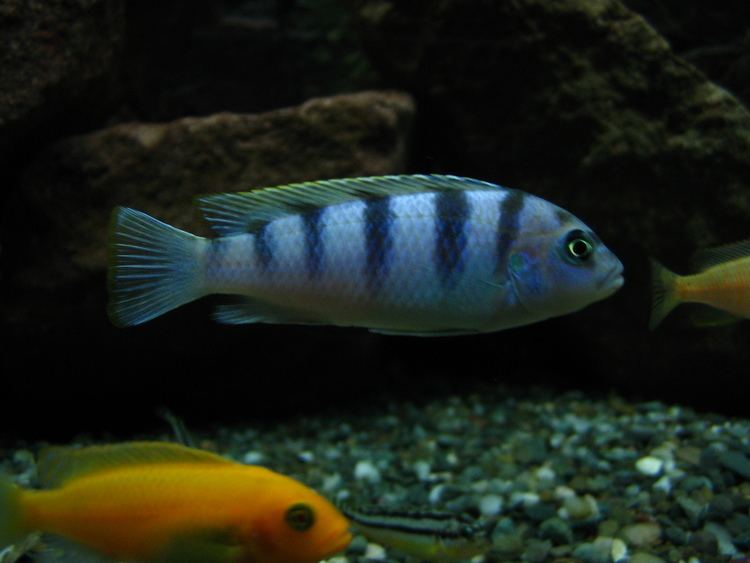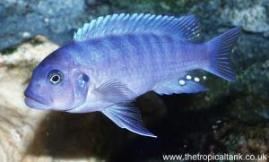Order Perciformes | Phylum Chordata Family Cichlidae Scientific name Maylandia estherae Rank Species | |
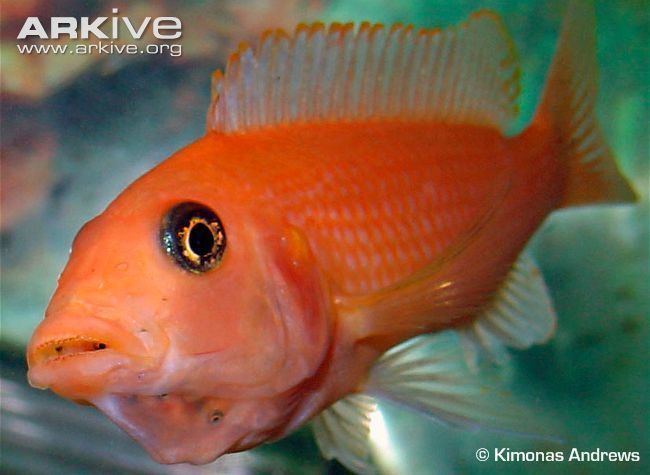 | ||
Similar Maylandia, Cichlid, Pseudotropheus, Labidochromis, Melanochromis | ||
Maylandia estherae (the red zebra, or Esther Grant's zebra) is a Pseudotrophine cichlid. It is a rock dwelling fish, or mbuna, from Lake Malawi. This fish, like most cichlids from Lake Malawi, is a mouthbrooder—females hold their fertilized eggs, then fry, in their mouth until they are released after about 21 days.
Contents
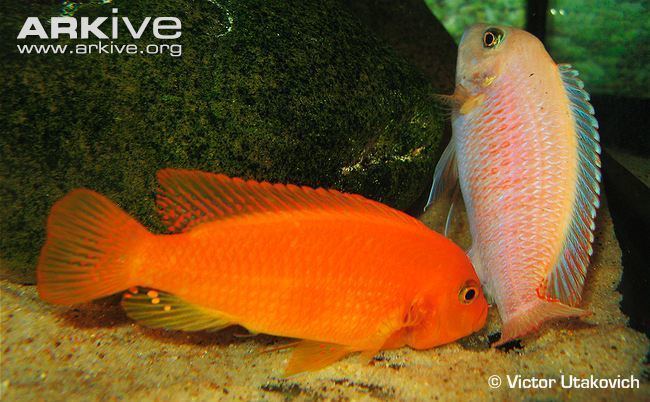
Red zebra maylandia estherae
Taxonomy and naming
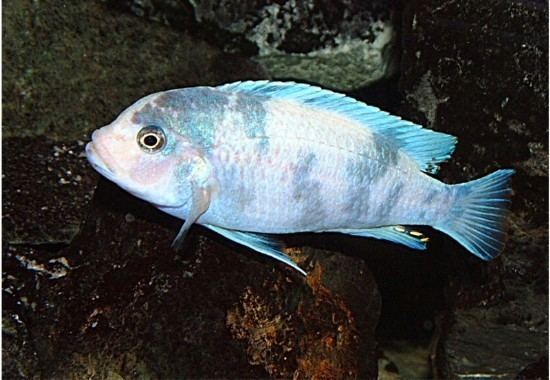
The genus name for this fish was once Pseudotropheus but that name is now restricted to different fish. Most ichthyological taxonomists place the species in Maylandia, though Ad Konings and thus much of the aquarium-related literature use Metriaclima instead.
Distribution
Maylandia estherae is endemic to Lake Malawi. Mainly in the north and northwest parts of the lake.
Description
Females can grow up to 10 cm (4 in) while males will grow up to 12.7 cm (5.0 in).
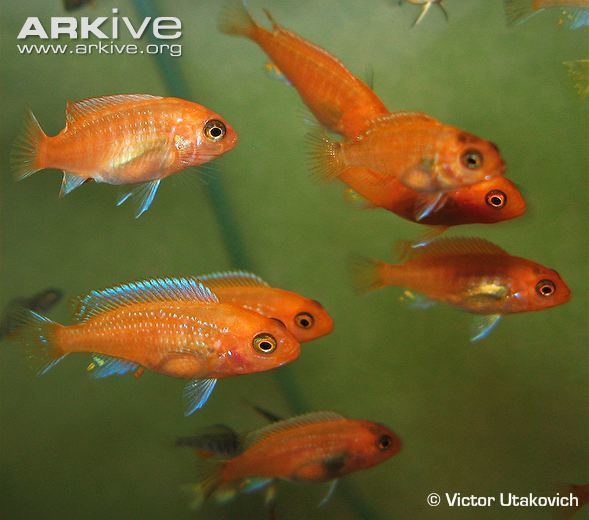
Despite their "red zebra" name, these fish most commonly have blue stripes as well, but they are sexually dimorphic, the males sometimes having reddish stripes.
In the aquarium
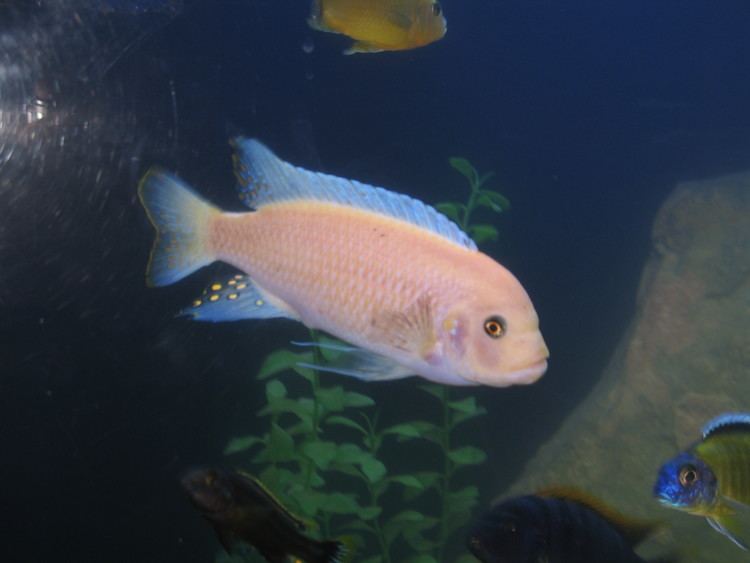
The males are territorial, and subordinate males will be picked on by the dominant or alpha male. Like the other cichlids of this genus, they are best kept in tanks harems with one male to many females. Like any cichlid you must put many other mbuna cichlids preferably 15. You should get 75-100 gallon tanks. They prefer a rocky terrain providing numerous hiding places, where weaker fish can find necessary shelter. They also arrange pebbles more often than other aquarium fish which should be smooth to avoid injury to their mouths, in an effort to build a “dwelling”. Their predominate food source is algae though those in aquaria will take typical cichlid foods and some vegetable greens as a treat. Do not feed them live foods or they will bloat which may prove fatal (do not feed high protein foods as they grow very fast anyway). pH 7.5-8.5, hard 150–200 mg/l, temp. 72-79 F (22-26 C).
